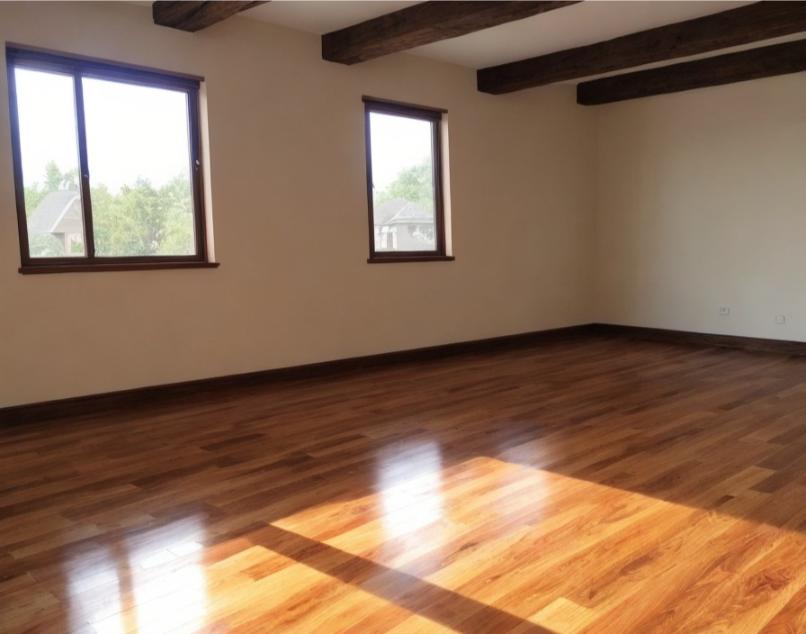You may be wondering how much weight your wood floors can safely support, especially if you’re planning to move heavy furniture or install large fixtures. Understanding the weight capacity of your flooring is crucial for maintaining its integrity and ensuring your safety.
In this blog post, we will guide you through the factors that influence wood floor weight capacity and provide you with a simple calculator tool to assess your specific needs accurately. This information will help you make informed decisions about your home and protect your investment.
Wood Floor Weight Capacity Calculator
To determine whether your wood floor can support the intended load, understanding weight capacity is vital.
This capacity reflects the maximum weight your flooring can handle without sustaining damage or compromising safety. It’s important to evaluate your specific flooring type, installation method, and usage requirements to ensure optimal performance and longevity.
Wood Floor Weight Capacity Calculator
Factors Influencing Weight Capacity
Below are several factors that influence the weight capacity of your wood flooring:
- Type of wood species
- Thickness of the flooring
- Subflooring materials and support
- Installation method (nailing, gluing, floating)
Thou must consider these elements to ensure your wood floor remains safe and durable.
Common Weight Capacity Standards
Across the industry, builders and manufacturers follow specific weight capacity standards to establish safety benchmarks for wood floors. These standards typically vary depending on the type of wood, installation method, and usage scenario.
Considering these common standards can guide you in making an informed decision when selecting flooring. For instance, residential wood floors may have a weight capacity of around 30 to 40 pounds per square foot, while commercial applications could demand higher thresholds. Understanding these norms ensures that your flooring is suitable for its intended use and prevents overcrowding that could lead to damage.
Types of Wood Flooring
Some of the most common types of wood flooring include:
- Solid Hardwood
- Engineered Wood
- Laminate Flooring
- Bamboo Flooring
- Reclaimed Wood
After selecting the right type for your space, you must also consider other factors like maintenance and installation.
| Type | Description |
|---|---|
| Solid Hardwood | Made from a single piece of timber, known for its beauty and longevity. |
| Engineered Wood | Composed of several layers of wood, offering better moisture resistance. |
| Laminate Flooring | Not real wood, but mimics its appearance; very durable and cost-effective. |
| Bamboo Flooring | Not technically wood, but highly sustainable and strong. |
| Reclaimed Wood | Repurposed from old structures, adds character to your flooring. |
Solid Wood vs. Engineered Wood
Flooring options vary widely, with solid wood offering natural beauty and engineered wood providing enhanced stability in humid conditions. You must evaluate your environment to decide which type matches your lifestyle and design preferences.
Durability and Weight Capacity Comparison
Wood flooring can impact your space’s durability and load-bearing capacity significantly. Understanding how each type behaves under stress is imperative.Durability and Weight Capacity
| Type | Weight Capacity |
|---|---|
| Solid Hardwood | High |
| Engineered Wood | Moderate |
| Laminate Flooring | Moderate |
| Bamboo Flooring | High |
| Reclaimed Wood | Variable |
But keep in mind that while solid wood may offer superior weight capacity, engineered wood is perfect for basements and moisture-prone areas. You should weigh durability against your specific needs and conditions to ensure a floor that lasts.Further Durability Insights
| Type | Durability Rating |
|---|---|
| Solid Hardwood | 8-10 years |
| Engineered Wood | 7-10 years |
| Laminate Flooring | 5-10 years |
| Bamboo Flooring | 6-10 years |
| Reclaimed Wood | 10+ years depending on maintenance |
Weight Capacity Calculation Methods
One of the fundamental steps in determining the weight capacity of your wood floor is choosing the right calculation method. You can either manually calculate based on specific formulas and measurements or utilize modern tools like online calculators. Each approach has its advantages and can lead you to a well-informed decision regarding your flooring needs.
Manual Calculation Approach
An effective method to estimate your wood floor’s weight capacity is through manual calculation. This approach requires you to consider the type of wood, the thickness of the flooring, and the spacing of the floor joists. By applying the right formulas, you can estimate the maximum load that your floors can safely handle.
Using Online Calculators
Between manual calculations and online tools, online calculators offer a quicker solution to assess weight capacity. These user-friendly resources require minimal input from you, such as wood type, dimensions, and desired load, giving you an instant estimation of your floor’s capacity.
To streamline your decision-making process, online calculators often incorporate various factors and nuances of flooring materials. They can adjust for different types of wood and conditions, providing you with tailored results. Using these tools not only saves time but also helps ensure accuracy, allowing you to focus on creating the perfect space without the worry of compromising your floor’s safety.
Importance of Weight Distribution
Despite popular belief, weight distribution plays a significant role in the longevity and durability of your wood floors. Uneven weight can lead to warping or damage over time, affecting not just the appearance of the floors but also their structural integrity. Understanding how to properly distribute weight throughout your space will help you maintain your investment and ensure your flooring remains in excellent condition for years to come.
Uniform vs. Point Load Distribution
About weight distribution, there are two primary types: uniform and point load. Uniform load refers to weight that is spread evenly across a surface, preventing concentration on any one area. In contrast, point load focuses weight in a specific spot, which can lead to stress and potential damage to your flooring. It is vital to consider these differences when arranging your space.
Implications for Furniture Placement
Load placement is critical when it comes to furniture arrangement in your home. You want to avoid placing heavy items like sofas or cabinets on point loads that could compromise the integrity of your wood floors. Instead, aim for even distribution across multiple flooring sections to minimize pressure and maintain balance throughout the area.
Plus, be mindful of the weight of each piece of furniture and the area it’s situated on. For example, heavy items should ideally be placed on larger rugs or areas with sufficient support underneath. By strategically positioning your furniture, you can enhance both the aesthetic appeal and the functionality of your space while protecting your wood floors from unnecessary wear and tear. Regularly assess your furniture placements and adjust as needed to promote even weight distribution.
Maintenance and Safety Considerations
Once again, keeping safety and maintenance in mind is important for the longevity and reliability of your wood floors. Proper care not only enhances their appearance but also ensures they can handle the weight requirements you set. Regular cleaning, avoiding excessive moisture, and using protective pads under furniture can all contribute to the safety and structural integrity of your flooring, allowing you to maintain its allure and functionality for years to come.
Regular Inspection Practices
With frequent inspections, you can identify potential issues before they escalate. Regularly examining your floors for any signs of wear, possible warping, or damage will help you take action promptly. Look for loose boards, gaps, and any unusual creaks or sounds that might indicate underlying problems. By staying proactive, you can safeguard the durability of your wood floors.
Signs of Overload Damage
For optimal performance, it’s vital to watch for signs of overload damage on your wood floors. This can manifest as sagging or bowing in the boards, cracks, and even splits. If you notice any of these issues, it may indicate that your flooring is bearing too much weight. Being aware of these signs will help you determine if it’s time to redistribute weight or reassess your weight capacity calculations.
In addition, small dents or surface scratches can accumulate over time if the weight limit is consistently exceeded. These minor damages may seem cosmetic but can compromise the floor’s structure. If you start seeing discoloration or uneven spaces between boards, these could be further indications that your flooring is under strain. Being attentive to these signals allows you to address problems early and protect your investment in beautiful wood flooring.
FAQs on Wood Floor Weight Capacity
For homeowners considering weight capacities of wood flooring, it’s vital to understand the limitations and how it impacts your space. Common inquiries often revolve around load distribution, flooring material types, and the implications of heavy furniture on your floors. Addressing these questions can prevent issues and enhance the longevity of your wood floors.
Common Questions Answered
Along your flooring journey, you may encounter several pivotal questions regarding what your wood floors can handle without compromising safety or integrity. These include understanding how to calculate weight capacity, the effect of different furniture types, and the importance of spacing and support.
Expert Tips for Homeowners
Before making decisions about your wood flooring, consider these expert tips to ensure optimal performance and durability:
- Check the manufacturer’s guidelines for maximum weight limits.
- Distribute weight evenly across larger pieces of furniture.
- Utilize furniture pads to minimize pressure on the floor.
- Inspect your flooring regularly for signs of wear or damage.
- Consider additional support beams or structures if needed.
The considerations above can greatly enhance your flooring’s longevity.
Consequently, when you take into account these expert insights, you position yourself for success in maintaining your wood floors’ integrity, providing a safer and more appealing environment for your home. You may also want to:
- Consult a flooring specialist if you plan to add significant weight.
- Evaluate the condition and type of wood before heavy installations.
- Ensure adequate airflow to prevent moisture-related issues.
The combination of these actions will significantly contribute to achieving lasting quality in your flooring.
To wrap up
Following this, utilizing a wood floor weight capacity calculator empowers you to assess the load-bearing capabilities of your flooring effectively. By understanding the maximum weight your wood floors can support, you can make informed decisions about furniture placement and avoid potential damage. This tool not only enhances safety in your home but also prolongs the life of your flooring investment. Always ensure that your calculations are accurate for optimal performance and peace of mind in your living space.








